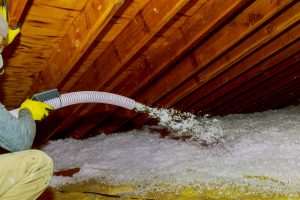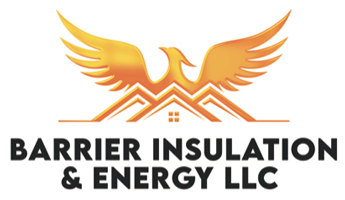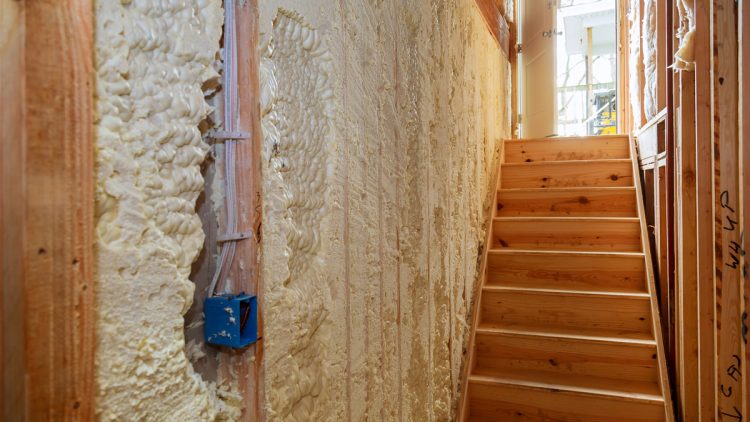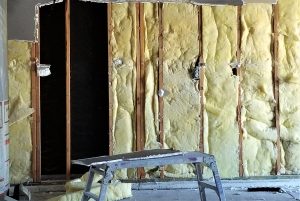How Long Does Insulation Last?
The majority of insulation types can last between 15-20 years before ultimately breaking down. Sturdy insulation forms, such as spray foam, can last between 80-100 years.
Average Insulation Lifespan
The lifespan of your insulation will depend on material type and how it is installed. Typically, insulation will last between 15-20 years, as previously stated. Insulation only lasts for 100 years when it is in perfectly ideal conditions.
Factors That Can Damage Insulation
Most of us know that life and accidents happen and insulation can be damaged and rendered less effective, or not effective at all. Here are some of the common issues homeowners have that ruins insulation and requires insulation removal and insulation replacement.
Water Damage
Roofs leak. They leak when they are not cared for and maintained but also when there are storms or damage from trees. If a tree loses a branch and it hits the roofing water will leak into your roof and damage your insulation. It can compress the fibers or knock the insulation out of place.
Mold
If water is left too long it will mean that it can stagnate and form mold. Molds that form in homes can lead to respiratory issues and it means that the insulation isn’t doing its job anymore. When insulation develops mildew or mold it needs to be removed and replaced. This means your home will have better air quality and insulation.
Punctured Insulation
Things that come through the roof or when work is done on the roof insulation layers can be punctured. When air can get through it means the insulation cannot do its job. This can be punctured spray foam insulation , torn paper on batts, or other types of puncture problems.
Falling Down
Insulation that is installed upside down in attics, ceilings, or crawl spaces is notorious for falling out of place. The paper backing is stapled into place, but it is common after 15 or 20 years for it to fall out of place. Depending on the condition of the insulation homeowners may be able to staple it back into place. If the paper backing is too damaged or the insulation has become wet or moldy it should be removed and replaced.
Settling
Older blown in or loose fill insulation tends to settle over time and not fill the walls or attics it was installed in. R-Value is calculated per inch. If the insulation has settled and is no longer 6 or 8 inches deep as it was when it was installed it means that it isn’t as effective. This means that sections might simply have no insulation at the top areas and heat is getting through. Newer types of loose fill insulation such as Knauf EcoFill Blowing Woold Insulation is environmentally friendly and does not settle.
Dirty Insulation
The places that insulation is installed in does not always stay clean or dust free. When excessive dust or debris settles on insulation it causes it to compress and lose effectiveness. If the loose fill insulation in your attic has layers of dust, dirt, or other debris it is reducing the thermal performance and needs to be removed and replaced.
Common Types Of Insulation
Some homeowners may become overwhelmed by how many choices of insulation are currently available. With a wide variety of options on the market today, each will come with its own pros and cons. Let’s take a look at some common insulation types below.
Spray Foam Insulation
Spray foam insulation is one of the most popular choices in house insulation in today’s market. This is because it not only insulates the house, but it creates a seal. Even the best contractors cannot create an air tight seal with joints. With this expanding foam insulator these gaps can be sealed up and your home can be dramatically more energy efficient.
Reflective & Radiant Barrier Insulation
In areas like Arizona radiant barrier insulations are especially effective. Many homes have their cooling ducts running through the ceilings and attic areas. In these cases keeping the attic cooler is absolutely critical in having an energy efficient home.
Radiant barriers alone can reduce energy costs as much as 5-10%. Using a radiant barrier in combination with another insulation type is a great way to maximize the homes thermal efficiency and reduce energy costs year long.
Cotton Insulation
Cotton insulation is commonly made out of old jeans. You know those 90’s jeans you never wear anymore? There is a company called Bonded Logic that can take those unwanted jeans and turn them into denim insulation. Denim insulation is actually becoming very popular, being sold by stores, and comes in a variety of thicknesses.
Cellulose Insulation
Cellulose Insulation is comprised of nontoxic and recycled treated cardboard or newspaper, provides excellent insulation for your business or home, and costs less to install than cotton.
When cellulose came out, it wasn’t that popular with homeowners because they feared that the cellulose would invite mold and critters into their home. Although, with advances in nontoxic chemicals, this type of insulation is better protected and is now flame resistant.
Wool Insulation
Wool insulation is mostly made out of sheep fibers. Many homeowners and business owners turn to sheep wool to keep their businesses and homes insulation. Sheep inhabit some of the most coolest climates in the world.
The fibers are tightly packed to trap air and make tiny air pockets, so the insulation has the capability of releasing moisture. Also, this type of insulation is very resistant to fire to make it a safe choice to install in your home.
Soy-Based Insulation
Some people choose not to install the 3 insulation types above because they don’t fill in the tiny cracks like spray foam insulation does. Although, there is a new product that hit the market about 10 years ago called soy-based insulation. Soy-based is very similar to spray foam insulation where it fills in cracks and is sprayed on , only it uses renewable and biodegradable resources to do it.
All of these non-fiberglass insulation types may cost a little bit more than fiberglass insulation, but the savings on your cooling and heating bills make them a more affordable option to consider.
Loose & Blown In Insulation
Cellulose and mineral wool are two types of loose/blown in insulation types. There is a fiberglass option in this type of insulation so homeowners wanting to stay away from fiberglass insulation will want to be very specific about what type they want their contractor to put in their home.

Non Fiberglass Insulation Installation
We can help you affordably install non fiberglass insulation that will keep your home energy efficient and healthy for the whole family.[/ezcol_1half_end]


